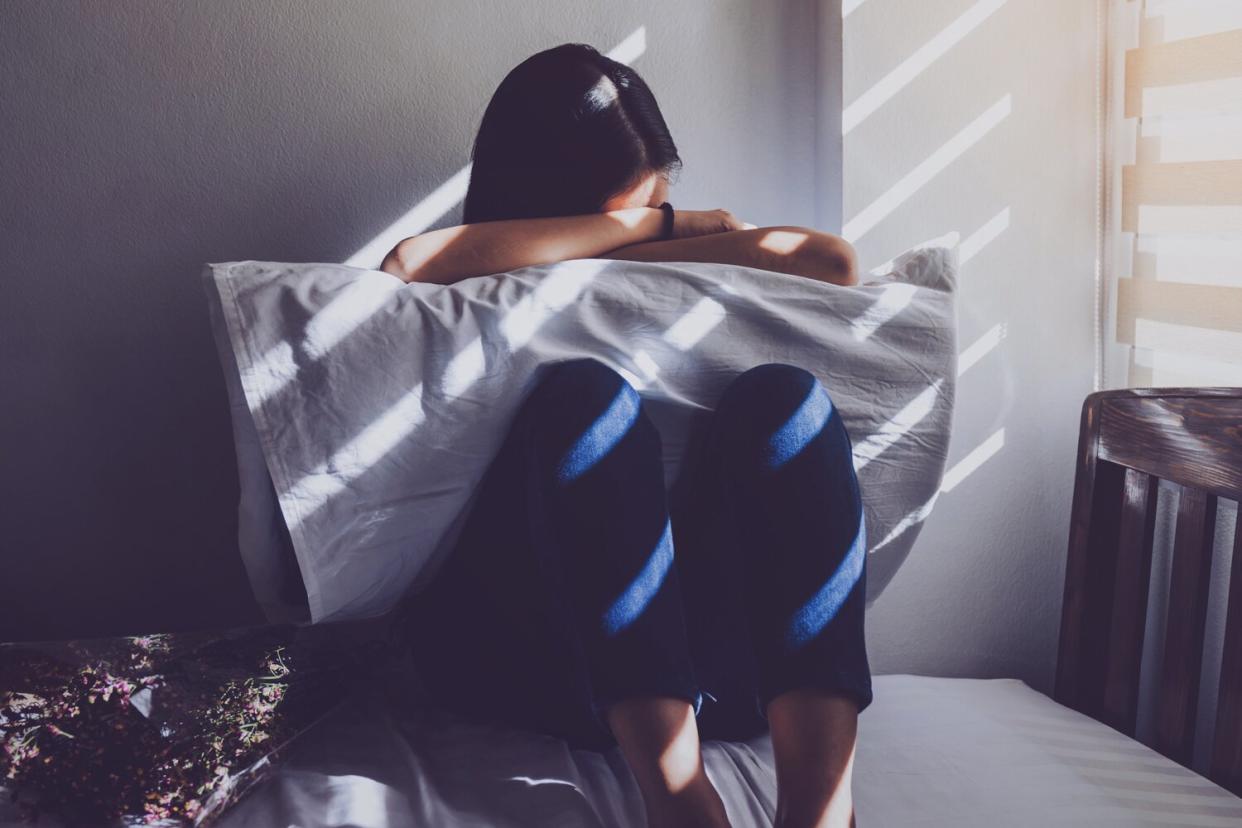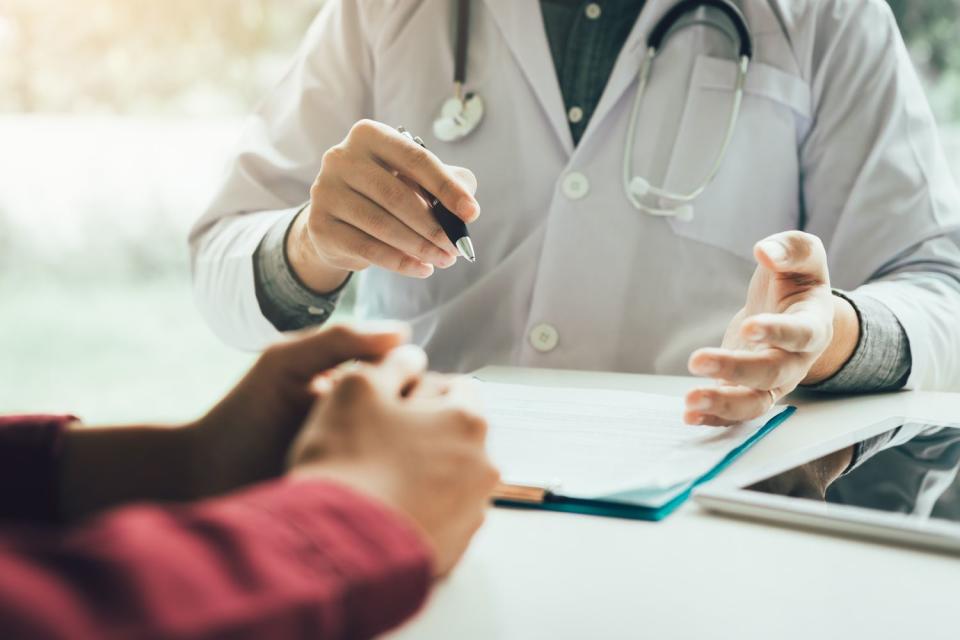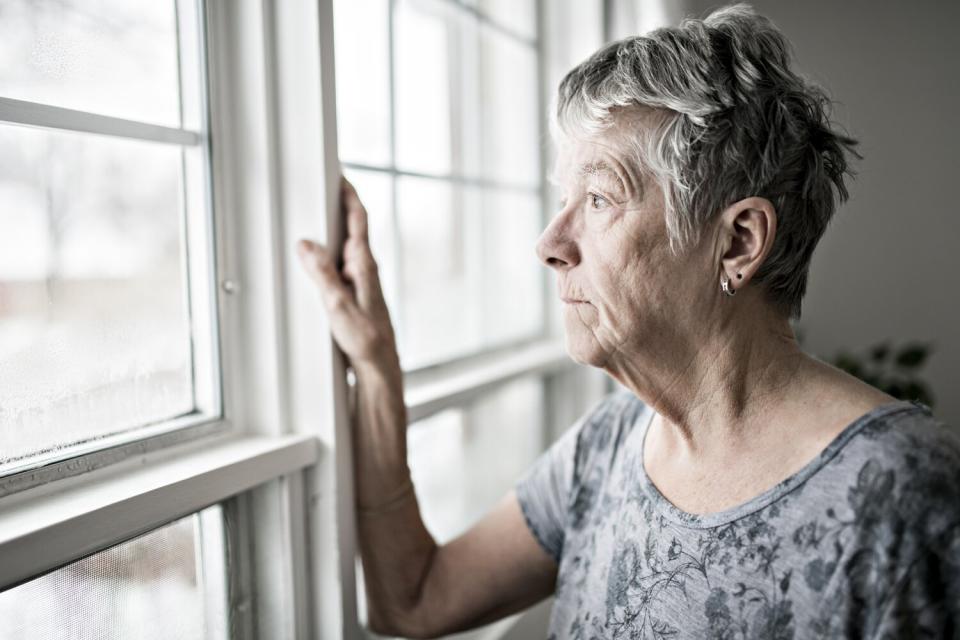What's the Difference Between Anxiety and Depression?

Getty Images
Nearly 103 million American adults will deal with a mental health issue like anxiety or depression throughout their lives. according to the National Institute of Mental Health (NIMH). T
The organization also states that an estimated that 8.4% of all U.S. adults suffered with at least one major depressive episode in 2020 alone.
Forty million adults deal with some form of anxiety each year in the United States, according to the Anxiety & Depression Association of America; additional, the ADAA says, major depressive disorder is the leading cause of disability in Americans ages 15 to 44.
While these are two common mental health issues that people battle individually, they are also things that can occur simultaneously. In fact, more than half of people who are diagnosed with depression have an anxiety disorder as well.
But what is the difference between anxiety and depression? How do you know which one you may be dealing with? And what do you do if you have both?
Anxiety vs. depression
"Anxiety and depression are both mental health problems that can have a profound impact on a person's life and their ability to function," says Dr. Nathan Brandon, a licensed clinical psychologist and a certified clinical anxiety treatment professional[AA2] .
While the two conditions share some similarities, there are also key differentiators between them.
"Anxiety is characterized by feelings of worry, nervousness and fear," Brandon explains. "Depression, on the other hand, is characterized by feelings of sadness, hopelessness and worthlessness."
Maggie Holland, a licensed mental health clinician in Washington, says that anxiety is often thought of as struggling with anticipating the future, and depression is thought of as looking back to the past.
"Unfortunately, it's a little more complicated than that," she says. Each of these mental health disorders have their own set of symptoms and many can overlap between the two of them. And though you can absolutely have both at the same time, they are two separately diagnosed conditions.
RELATED: How Parents Experiencing Mental Health Issues Can Talk to Their Kids About It

Getty Images
Anxiety
Most people experience anxiety from time to time. This includes worrying about finances, an upcoming project at work or a health or family situation. But when these feelings persist, they can signify an anxiety disorder. There are various types of anxiety disorders, which can include generalized anxiety disorder, social anxiety, panic anxiety disorder and phobia-based anxieties. Left untreated, anxiety can impact a person's daily life, including their relationships with others and job performance.
Symptoms of generalized anxiety disorder include:
· Persistent worry that lasts for six months or longer and is hard to control
· Feeling restless or on edge
· Finding yourself easily fatigued
· Experiencing difficulty concentrating
· Headaches
· Muscle aches and tension and unexplained stomach pains
· Sleep disturbances, such as difficulty staying or falling asleep

Getty Images
Depression
Depression can impact how a person thinks, feels and engages with the world around them. Like anxiety, it also can appear in a variety of forms. This includes general major depressive disorder, postpartum depression, seasonal affective disorder and bipolar disorder. For a condition to be labeled as depression, the symptoms are usually present for a period of at least two weeks.
Symptoms of depression include:
· Persistent feelings of being anxious, sad or describing your mood as "empty"
· Feeling helplessness or pessimistic
· Feelings of irritability, lingering guilt, worthlessness or helplessness
· Diminished interest in once pleasurable activities or hobbies
· Significant weight loss without dieting or increased exercise routine
· Appetite changes
· Feeling less energetic or more fatigued
· Difficulty sleeping or oversleeping
· Talking slowly or feeling sluggish
· Having a harder time thinking, concentrating or making decisions
· Recurrent thoughts of death or suicide, as well as suicide attempts
· Headaches, cramps, pains, aches that are recurring and unexplained
RELATED: The Beginner's Guide to Finding a Therapist
When anxiety and depression coexist
"There are many symptoms that overlap," says Holland. These include symptoms like difficulty concentrating, sleep disturbances, loss of energy, aches, pains and digestive issues.
Holland also notes that there are further nuances to the symptoms, meaning there's more overlap than might appear at face value; oftentimes, for instance, anxious thinking patterns can include an element of feeling worthless or excessive amounts of guilt. And irritability is often a symptom that clinicians associate with depression because of the other symptoms present, although irritability isn't directly outlined within a depression diagnosis.
"Many of the symptoms in either category could be associated with the other diagnosis, if given the right circumstantial evidence, which is why it's so important to be evaluated by a mental health professional," Holland says.
In her practice, Holland uses the patient's suicidal ideation and energy levels to help distinguish between which diagnosis to give. "If someone is struggling with lethargy and motivation, I generally look more toward depression," she explains. "If someone feels more like they or their brain is spinning like a top, I look to anxiety."
"Anxiety and depression have a complicated relationship that can become cyclical," adds Brandon. He explains that people who are depressed often feel anxious and that chronically anxious people can become depressed.
"When you're anxious, you tend to worry about things and then feel depressed about those things," says Brandon. "When you're depressed, you ruminate about the past and begin to feel anxious or worried."
The chance of developing depression, he warns, is much higher when an anxiety disorder already exists.

Getty Images
Treatments
"Anxiety and depression have similar biological mechanisms in the brain," says Yvette Visconte, clinical director of mental health at Families Together of Orange County Community Health Center. Both conditions, she says can often be treated using therapeutic modalities such as Cognitive Behavioral Therapy, Dialectical Behavioral Therapy and Motivational Interviewing. [AA3]
"Each patient's treatment is customized to their goals and prioritized by which one causes more impairment than the other," Viscont explains, adding that when they are treated together, it's typically because they are symptoms of a particular stressor such as trauma.
"Ultimately, treatment is specific to each patient, and takes more time if both anxiety and depression are present," Viscont says.
Some treatments will look similar, says Holland: "Targeting improvements to sleep hygiene, learning new thinking and cognitive patterns, and even some psychiatric medications target the same symptoms."
Both diagnoses, Holland says, require psychoeducation to empower the individual to understand what needs to change, and to build the motivation to see the treatment through until change is achieved.
"It's also interesting to note that both anxiety and depression can be housed in the same part of our brain" the amygdala," Holland says. "The work to regulate your nervous system, feelings of safety and emotional regulation will all be the same for anxiety and depression."
Depending on the symptoms present, safety planning for suicidal ideation may be needed, as well as addressing healthy eating habits and overall health.
If you or someone you know is considering suicide, please contact the National Suicide Prevention Lifeline at 1-800-273-TALK (8255), text "STRENGTH" to the Crisis Text Line at 741-741 or go to suicidepreventionlifeline.org.

